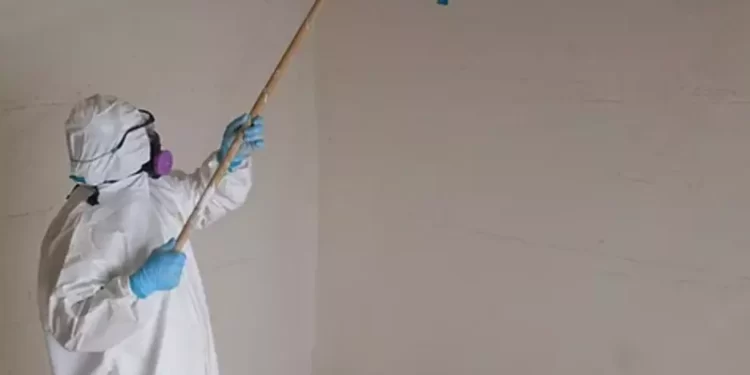Asbestos, a naturally occurring mineral once hailed for its versatility in construction and insulation, has now earned a notorious reputation as a health hazard. Homes built before the 1980s are likely to contain asbestos-containing materials, and this poses a significant risk to occupants. In this comprehensive guide, we’ll delve into the critical aspects of asbestos inspection and remediation, ensuring that you can safeguard your home and your loved ones from this silent threat.
Understanding Asbestos
What is Asbestos?
Asbestos is a group of six naturally occurring fibrous minerals known for their resistance to heat, fire, and electricity. Historically, it was extensively used in construction, shipbuilding, and manufacturing due to its remarkable insulating properties.
Health Hazards of Asbestos
The insidious danger of asbestos lies in its potential to release microscopic fibers when disturbed. Inhalation of these fibers can lead to severe health problems, including lung cancer, asbestosis, and mesothelioma. As a responsible homeowner, it’s crucial to be aware of the potential risks.

Read more home renovation tips here.
Identifying Asbestos in Your Home
Signs of Asbestos Contamination
To protect your home and family, it’s essential to identify potential asbestos-containing materials. Common sources include:
Insulation: Asbestos was often used in insulation materials, such as vermiculite and asbestos blankets.
Floor Tiles: Vinyl floor tiles and adhesive may contain asbestos.
Roofing and Siding: Asbestos cement roofing and siding materials are prevalent in older homes.
Pipes and Ducts: Asbestos was used to insulate pipes and heating ducts.
Professional Asbestos Inspection
While some asbestos-containing materials may be visible, others are not. Therefore, it’s prudent to hire a certified asbestos inspector to conduct a thorough assessment of your home. They will collect samples and send them to a certified laboratory for analysis.
The Asbestos Remediation Process
Importance of Professional Remediation
If asbestos is detected in your home, it’s vital to enlist the services of a licensed asbestos abatement contractor. Attempting to remove asbestos yourself can be extremely dangerous, as improper handling can release more fibers into the air.
The Remediation Process
Professional asbestos remediation involves several steps, including:
Isolation: The affected area is sealed off to prevent asbestos fibers from spreading.
Removal: Trained technicians carefully remove asbestos-containing materials.
Cleanup: Thorough cleaning ensures that no asbestos residue remains.
Disposal: Asbestos waste is disposed of in accordance with strict regulations.
DIY vs. Professional Remediation
Risks of DIY Asbestos Removal
While DIY projects can be tempting, asbestos removal should never be one of them. The risks associated with DIY asbestos removal include:
Health Hazards: Exposure to asbestos fibers can lead to serious health issues.
Legal Implications: Improper disposal of asbestos can result in legal consequences.
Incomplete Removal: Amateurs may not remove all asbestos-containing materials, leaving lingering dangers.
Benefits of Professional Remediation
Hiring professionals ensures:
Safety: Trained experts minimize the risk of asbestos exposure.
Compliance: They adhere to all regulations and guidelines.
Peace of Mind: You can trust that your home is asbestos-free.
Cost of Asbestos Remediation
The cost of asbestos remediation can vary significantly depending on several factors, including the extent of contamination and the location of the affected materials. However, it’s essential to view this cost as an investment in the safety and well-being of your family.
Conclusion
Protecting your home from asbestos contamination is not just a matter of property maintenance; it’s a matter of safeguarding your health and the health of your loved ones. Asbestos is a silent threat, and only through proper inspection and professional remediation can you ensure a safe and asbestos-free living environment.







